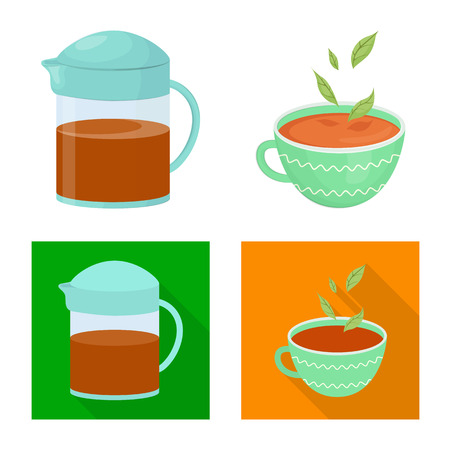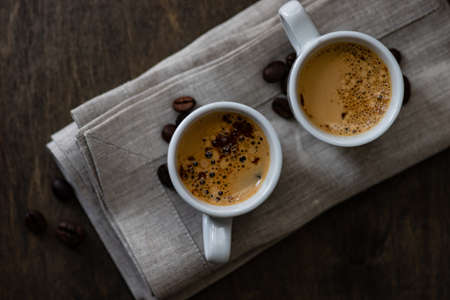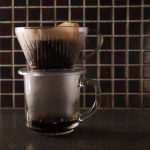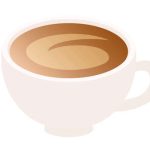1. Choosing the Right Coffee Beans
If you want to master drip coffee at home, it all starts with choosing the right coffee beans. The flavor of your final cup depends heavily on three main factors: origin, roast level, and freshness. Let’s break down what each of these means and how they affect your brew.
Bean Origin Matters
Coffee beans are grown all around the world, and each region brings out different flavors in the beans. Here’s a quick guide to some popular origins and their typical taste profiles:
| Region | Flavor Notes | Best For |
|---|---|---|
| Colombia | Balanced, nutty, mild citrus | Everyday drinkers who like smooth coffee |
| Ethiopia | Fruity, floral, bright acidity | Adventurous drinkers who enjoy complex flavors |
| Brazil | Chocolatey, low acidity, nutty | Lovers of bold, rich coffees |
| Sumatra (Indonesia) | Earthy, full-bodied, spicy | Those who prefer deep and strong flavors |
The Roast Level Counts Too
The roast level can completely change how your coffee tastes. Here’s a simple breakdown to help you pick what suits you best:
| Roast Level | Taste Profile | Recommended For |
|---|---|---|
| Light Roast | Bright, acidic, preserves origin flavors | Coffee lovers who want to taste regional notes |
| Medium Roast | Smooth, balanced flavor with some sweetness | The most versatile choice for drip coffee fans |
| Dark Roast | Bitter-sweet, smoky, bold body | Those who love intense and rich brews |
The Importance of Freshness
No matter how good the beans are, if theyre not fresh, your coffee wont taste its best. Look for beans that were roasted within the last two weeks. Avoid pre-ground coffee if possible—grinding right before brewing keeps the flavors intact. Buying whole beans and storing them in an airtight container away from light and heat helps preserve freshness longer.
Quick Tips for Choosing High-Quality Beans:
- Check the roast date: Fresher is better—aim for within 7–14 days.
- Avoid oily beans: Especially for drip brewing, dry-looking beans are a better sign of quality.
- Buy from local roasters: Youll often get fresher beans and support small businesses.
- Taste test different origins and roasts: It’s the best way to find what you love.
Your perfect cup of drip coffee begins with choosing the right beans. Take time to explore different options—you might be surprised by what you discover in every bag.
2. Essential Equipment for Home Brewing
To brew a truly great cup of drip coffee at home, having the right equipment is key. Whether youre just starting out or looking to upgrade your setup, here’s a breakdown of the must-have tools you’ll need to master your home brewing game.
Brewer Types
There are several types of drip coffee makers available, and choosing the right one depends on your personal taste and how hands-on you want to be during the brewing process.
| Brewer Type | Description | Best For |
|---|---|---|
| Automatic Drip Machine | A plug-in machine that heats water and drips it over grounds automatically. | Convenience and consistency |
| Manual Pour-Over (e.g. Hario V60, Chemex) | You pour hot water over coffee grounds manually using a gooseneck kettle. | Control and flavor clarity |
| Coffee Maker with Built-In Grinder | An all-in-one system that grinds beans fresh before brewing. | Simplicity with fresh coffee taste |
Coffee Grinders
The grind size has a huge impact on flavor, so a good grinder is non-negotiable. Burr grinders are preferred over blade grinders because they provide a consistent grind size, which leads to more even extraction and better-tasting coffee.
Burr Grinder vs. Blade Grinder
| Grinder Type | Pros | Cons |
|---|---|---|
| Burr Grinder | Consistent grind size, better flavor control | More expensive, larger in size |
| Blade Grinder | Affordable, compact | Inconsistent grind, can lead to bitter or weak brews |
Coffee Filters
Your choice of filter affects both flavor and mouthfeel. Heres what to know about the main types:
- Paper Filters: Produce a clean cup with no sediment; available in bleached or unbleached versions.
- Metal Filters: Reusable and eco-friendly; allow more oils into the cup, giving a fuller body.
- Cloth Filters: A middle ground between paper and metal; reusable but require more maintenance.
Other Useful Accessories
- Gooseneck Kettle: Offers precise control when pouring water for manual brewing methods like pour-over.
- Coffee Scale: Helps you measure your grounds and water accurately for consistent results every time.
- Thermometer: Ensures your water is at the optimal temperature (195–205°F) for proper extraction.
- Coffee Storage Canister: Keeps your beans fresh by protecting them from light, air, moisture, and heat.
A good brew starts with great gear. With these essential tools in hand, you’re well on your way to enjoying delicious drip coffee without leaving your kitchen.

3. The Perfect Grind and Coffee-to-Water Ratio
Getting your grind size and coffee-to-water ratio just right is key to brewing a delicious cup of drip coffee. These two factors have a big impact on how your coffee tastes—too fine or too coarse a grind, or too much or too little coffee, can throw off the balance and flavor.
Grind Size Matters
For drip coffee makers, a medium grind is usually the sweet spot. It should feel like sand between your fingers—not too powdery like espresso grind, and not as chunky as what youd use for French press. A consistent grind helps water flow evenly through the grounds, which extracts the best flavors without over- or under-extracting.
Grind Size Guide by Brew Method
| Brew Method | Recommended Grind Size | Texture Comparison |
|---|---|---|
| Standard Drip Coffee Maker | Medium | Like beach sand |
| Pourover (e.g., Chemex) | Medium-Coarse | Rough sand or kosher salt |
| Aeropress (with paper filter) | Medium-Fine | Between table salt and sand |
Coffee-to-Water Ratio Basics
The general rule of thumb for drip coffee is 1 to 2 tablespoons of ground coffee per 6 ounces of water. But everyone’s taste is different, so you may want to tweak it based on how strong you like your brew.
Easy Coffee Ratio Reference Chart
| Cups of Coffee (6 oz each) | Coffee Amount (Tablespoons) | Coffee Amount (Grams) |
|---|---|---|
| 1 cup | 1.5 – 2 tbsp | 10 – 12g |
| 2 cups | 3 – 4 tbsp | 20 – 24g |
| 4 cups | 6 – 8 tbsp | 40 – 48g |
| 8 cups | 12 – 16 tbsp | 80 – 96g |
Tuning Your Brew Strength at Home
If your coffee tastes too weak, try using a finer grind or adding more grounds. If its too bitter or strong, go coarser or reduce the coffee amount slightly. Don’t be afraid to experiment—once you find your ideal balance, you’ll be able to make café-quality drip coffee every time.
Pro Tip:
A digital scale can really help with consistency. Measuring by weight instead of volume ensures youre getting the same great results with every brew.
4. Water Quality and Temperature Tips
When it comes to brewing a great cup of drip coffee at home, water isn’t just the background—it’s about 98% of your drink. That means the quality and temperature of your water can make or break your brew. Here’s how to get it just right using simple tools you might already have in your kitchen.
Why Water Quality Matters
If your tap water tastes off, your coffee probably will too. Chlorine, heavy minerals, or even old pipes can all affect the flavor. The best way to get clean, neutral-tasting water is by using filtered water—either from a pitcher-style filter or a built-in fridge filter.
Quick Guide: Choosing Your Water Source
| Water Type | Taste Impact | Recommendation |
|---|---|---|
| Tap Water (Unfiltered) | Can taste metallic or chlorinated | Not ideal unless your tap is high quality |
| Filtered Water | Clean and neutral flavor | Best for consistent results |
| Bottled Spring Water | Good mineral balance, usually clean | Great option if filtering isnt available |
| Distilled or RO Water | Lacks minerals, can taste flat | Avoid for coffee; minerals help with extraction |
The Ideal Brewing Temperature
Coffee extracts best between 195°F and 205°F. Too hot and you’ll over-extract the bitter compounds; too cool and youll under-extract, leaving your cup sour or weak. Most automatic drip machines don’t let you adjust the temp, but you can check if yours hits the mark by using a digital thermometer during brewing.
How to Check Your Brew Temp at Home
- Run a brew cycle with just water (no coffee).
- Use a digital thermometer to measure the water coming out into the carafe.
- If it’s below 195°F or above 205°F, consider upgrading your machine or pre-heating your water slightly.
Pro Tip:
If youre using a pour-over setup with a kettle, simply bring the water to a boil and let it sit for 30 seconds before pouring—that’ll usually land you right in the sweet spot of around 200°F.
Getting your water right doesnt require fancy gear—just some awareness and maybe a small upgrade like a basic filter or thermometer. It’s one of the easiest ways to level up your daily cup.
5. Mastering the Drip Brewing Process
If you want to brew consistently delicious drip coffee at home, getting the brewing process right is key. From blooming your grounds to the final pour, each step plays a role in bringing out the best flavors. Heres a simple, step-by-step guide to help you perfect your technique and avoid common mistakes.
Step-by-Step Guide to Brewing the Perfect Drip Coffee
- Measure Your Coffee and Water: Start with a ratio of 1:15 – thats 1 gram of coffee for every 15 grams (or ml) of water. For example, use 20g of coffee for 300ml of water.
- Grind Your Beans: Use a medium grind size, similar to sea salt. A consistent grind ensures even extraction.
- Prepare Your Filter: Place a paper filter in your dripper and rinse it with hot water to remove paper taste and preheat your brewer. Discard the rinse water.
- Add Ground Coffee: Put your ground coffee into the filter and gently shake it to level the bed.
- Bloom: Pour just enough hot water (about twice the weight of the coffee) to saturate all the grounds. Wait for 30-45 seconds. This releases trapped gases and helps prevent uneven brewing.
- Main Pour: Slowly pour the rest of the water in circular motions, starting from the center and moving outward, then back in again. Try to keep a steady pour rate and avoid pouring directly on the filter.
- Total Brew Time: Aim for a total brew time of around 3–4 minutes. This includes bloom and pour-over time.
Troubleshooting Common Drip Brewing Issues
| Problem | Possible Cause | Solution |
|---|---|---|
| Coffee tastes bitter | Over-extraction or too fine grind | Use a coarser grind or shorten brew time |
| Coffee tastes sour or weak | Under-extraction or too coarse grind | Use a finer grind or increase brew time |
| Brew is too slow | Grind is too fine or filter is clogged | Try a coarser grind or check for filter buildup |
| Brew is too fast | Grind is too coarse or uneven pouring | Use a finer grind and pour more evenly |
Pro Tips for Better Brews
- Use Freshly Roasted Beans: Coffee is best within two weeks of roasting.
- Filtered Water Matters: Hard water can affect flavor; use filtered if possible.
- Keep Equipment Clean: Oils can build up and impact taste—clean your dripper regularly.
By mastering each phase of the drip brewing process, from bloom to final drip, you’ll be well on your way to consistently great coffee right in your own kitchen.


